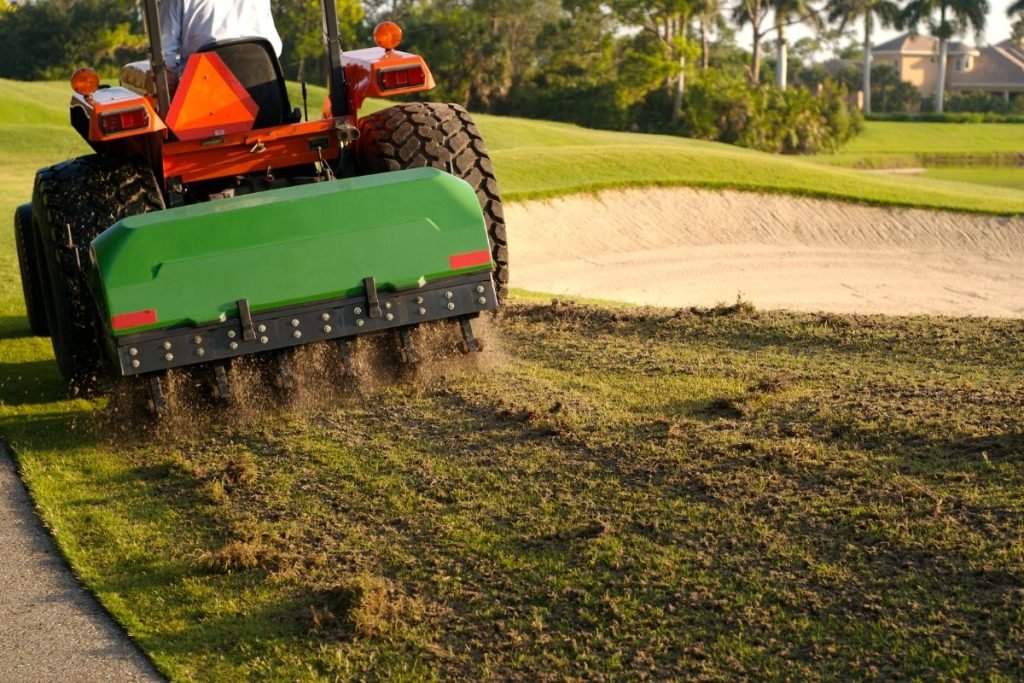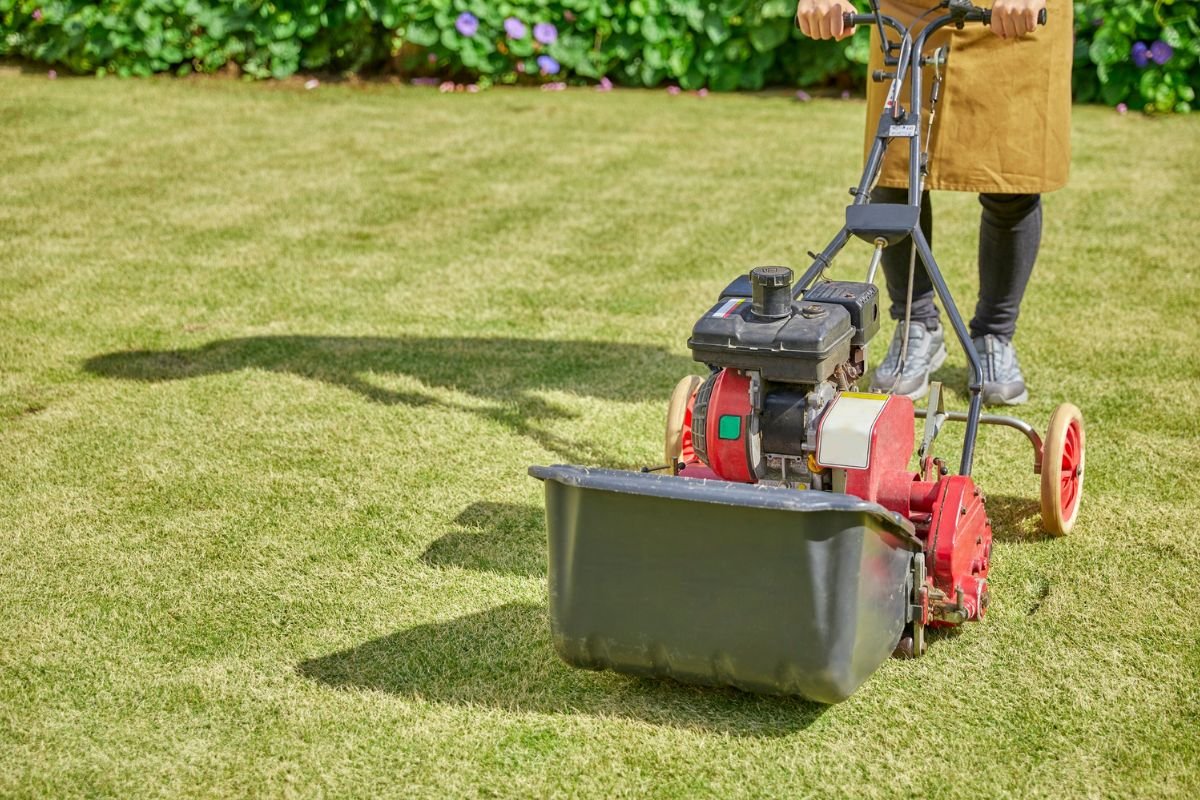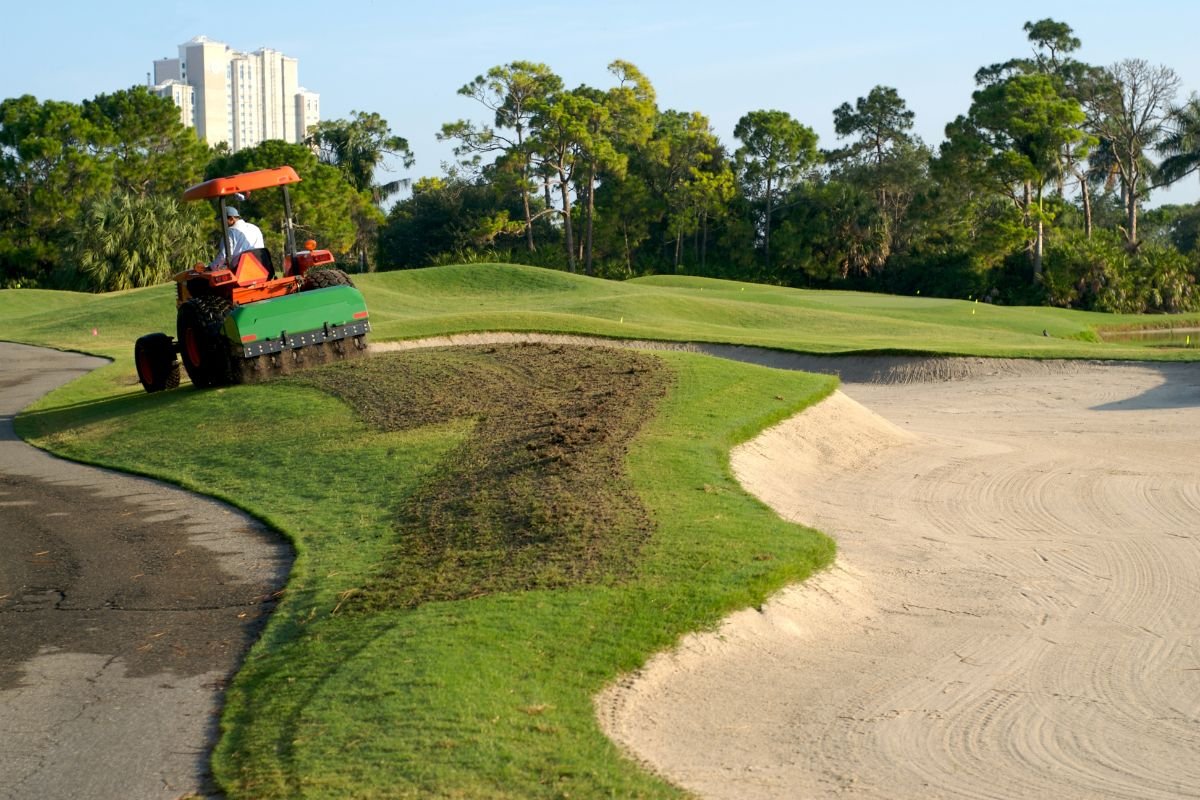
Is your lawn looking tired, patchy, or just not thriving despite your best efforts? The answer might be simpler than you think: your yard could need aeration! Aeration is the process of creating small holes in the soil to alleviate compaction, allowing air, water, and nutrients to penetrate to the roots.
Understanding Lawn Aeration
Lawn aeration is a crucial lawn care practice involving creating small holes in the soil. This allows vital elements like air, water, and nutrients to reach the grass roots, fostering a healthier, more vibrant lawn. Over time, soil naturally becomes compacted due to foot traffic, mowing, and the weight of rain. This compaction squeezes the soil particles together, restricting the movement of air and water. A compacted lawn has poor drainage and reduced nutrient intake, even with proper fertilizing, which leads to struggling grass, increased susceptibility to diseases, and poor overall appearance.
If you’re seeing issues like standing water after rain, hard soil, or thin grass, aeration might be just what your lawn needs.
7 Signs Your Yard Needs Aeration

If you’re unsure whether your lawn needs aeration, here are seven telltale signs to look for:
- Thin or Bare Patches of Grass: Compacted soil prevents grass roots from growing deeply and spreading, leading to thinning areas and bare spots. The grass struggles to establish itself, especially in high-traffic areas.
- Standing Water or Runoff: If you notice water pooling on your lawn long after it rains or water running off instead of soaking in, it’s a strong indicator of compacted soil. The water can’t penetrate the surface, leading to poor drainage and potential for lawn diseases.
- Hard, Compacted Soil: This is a very evident sign you should check. Take a screwdriver and try to stick it into the lawn, the deeper you can do it. The healthier the soil, if it’s difficult to plunge in then your soil is heavily compacted
- Excessive Thatch Buildup: While a thin layer of thatch is normal and beneficial, excessive thatch (a layer of dead and decaying organic matter) can suffocate the grass and create a barrier that prevents air and water from reaching the soil. Compacted soil can contribute to excessive thatch buildup.
- Heavy Foot Traffic or Parking: Areas of your lawn that experience a lot of foot traffic or are sometimes used for parking are likely to become compacted. The pressure compresses the soil, making it difficult for grass to grow.
- Clay-Based Soil: Lawns with predominantly clay-based soil are particularly prone to compaction because of their tiny particles. This means they should be aerated even more often than usual
- Stunted Grass Growth: If your grass looks thin and growing too slowly for what fertilizer and sunlight it getting than it also another sigh of compaction, since compacted soil prevents grass from getting all of the nutrients needed.
Benefits of Aerating Your Lawn
Aeration can transform a struggling lawn into a vibrant, healthy landscape. It is important to remember that this not only solves immediate problems but also has many other benefits to improve the lawn long-term. Some key benefits include:
- Improved Air and Water Circulation: Creates channels for air and water to penetrate the soil and reach the roots.
- Increased Nutrient Absorption: Allows fertilizers and other nutrients to reach the roots more effectively.
- Reduced Soil Compaction: Relieves the pressure of compaction, allowing the soil to breathe.
- Stronger Root Growth: Promotes deeper, healthier root systems that are more resilient to drought and disease.
- Reduced Thatch Buildup: Helps break down excessive thatch, improving overall lawn health.
- Enhanced Seed Germination: Improves seed-to-soil contact when overseeding after aeration.
Choosing the Right Aeration Method
There are two primary methods for aerating lawns: core aeration and spike aeration.
- Core Aeration: Core aeration involves removing small plugs or cores of soil from the lawn. This method provides the most effective and long-lasting results, as it physically removes compacted soil.
- Spike Aeration: Spike aeration uses solid tines to poke holes in the ground. While it’s less disruptive, it is considered less effective than core aeration.
Core aeration will always have an overall healthier impact to the lawn by allowing proper flow in drainage and nutrients. Spike Aeration is less impactful when compared with core aeration.
For more tips on aerating your lawn or to schedule a professional service, contact us today!
When to Aerate Your Lawn

The best time to aerate your lawn depends on the type of grass you have.
- Cool-Season Grasses (Kentucky Bluegrass, Ryegrass, Fescue): Aerate in the fall (September-November) or early spring (March-May).
- Warm-Season Grasses (Bermuda, Zoysia, Centipede): Aerate in late spring or early summer (May-July).
Avoid aerating during peak growing season or when the lawn is stressed. Aeration during optimal periods allows for quicker recovery and maximum benefits.
DIY vs. Professional Aeration
While DIY aeration is possible, it’s essential to consider the pros and cons. Renting an aerator can be time-consuming, physically demanding, and may not be as effective as professional services. Professional lawn care companies have the right equipment, expertise, and knowledge to aerate your lawn correctly and efficiently. Moreover, a certified professional will analyze soil and grass condition and provide recommendations that match.
If you’re unsure whether your yard needs aeration or want professional assistance to achieve a healthier lawn, give us a call today to speak with our experts and schedule a service!
Post-Aeration Care Tips
After aerating your lawn, follow these care tips to maximize the benefits:
- Water thoroughly: Water the lawn deeply immediately after aeration to help the soil settle and encourage root growth.
- Fertilize: Apply fertilizer to provide essential nutrients to the roots.
- Overseed: If you have thin or bare patches, overseed with grass seed to fill in the gaps.
- Continue regular lawn care: Mow, water, and fertilize regularly to maintain a healthy, vibrant lawn.
Invest in a Healthier, Greener Lawn
Lawn aeration is a worthwhile investment for any homeowner who wants a healthy, beautiful lawn. By understanding the signs that your yard needs aeration and following proper care tips, you can create a lush, green space that you’ll enjoy for years to come.
Frequently Asked Questions (FAQs)
How often should I aerate my lawn?
The frequency of aeration depends on several factors, including soil type, grass type, and foot traffic. In general, most lawns benefit from aeration every one to two years. Heavy clay soils or lawns with high foot traffic may require more frequent aeration.
Can I aerate my lawn myself?
Yes, you can aerate your lawn yourself, but it can be physically demanding and requires the right equipment. If you’re not comfortable operating heavy machinery or prefer the convenience of professional service, consider hiring a lawn care company.
How long does it take to see results after aerating?
You may start to see improvements in your lawn’s health within a few weeks to a few months after aeration. Full results will become more apparent over time as the grass roots grow deeper and the soil becomes less compacted.

